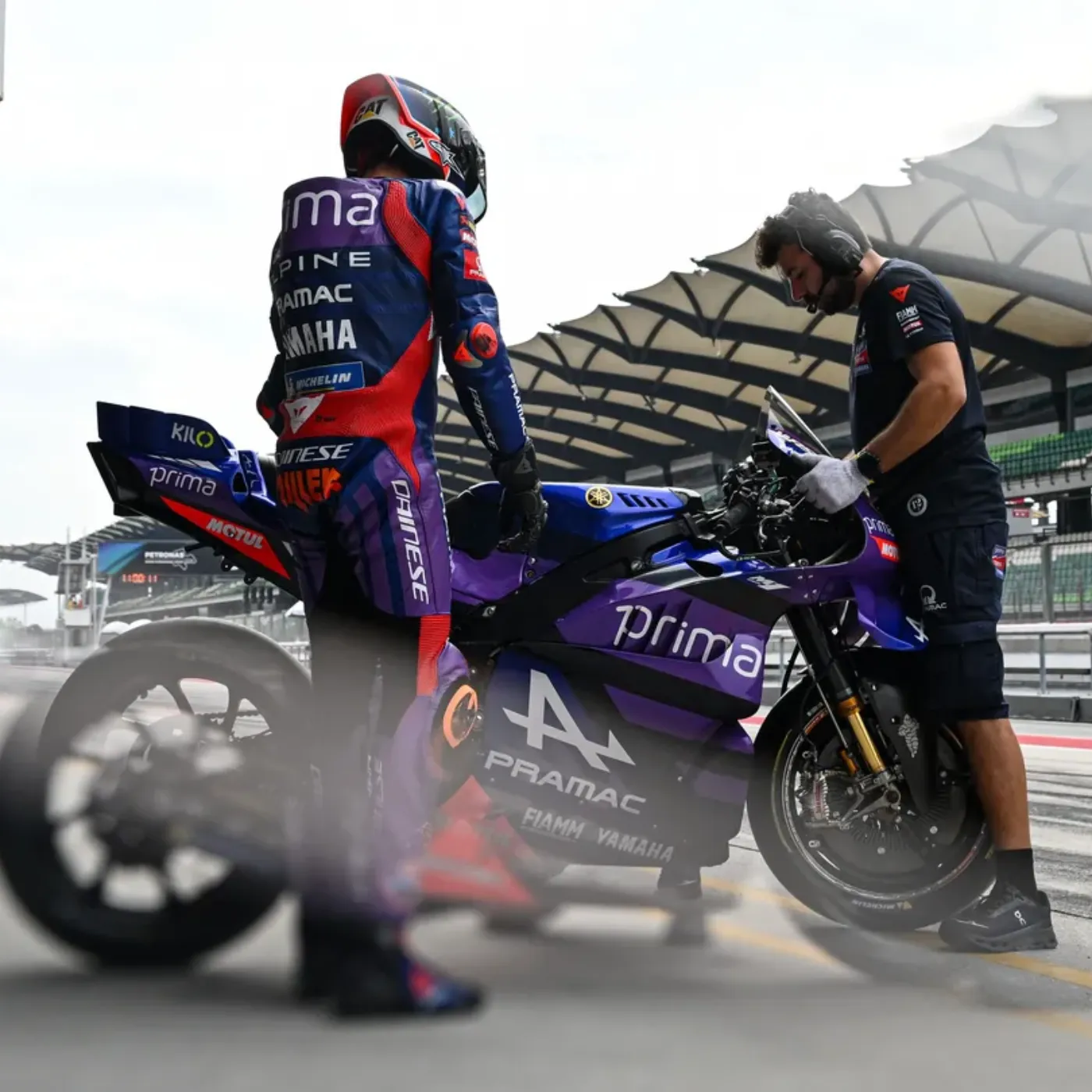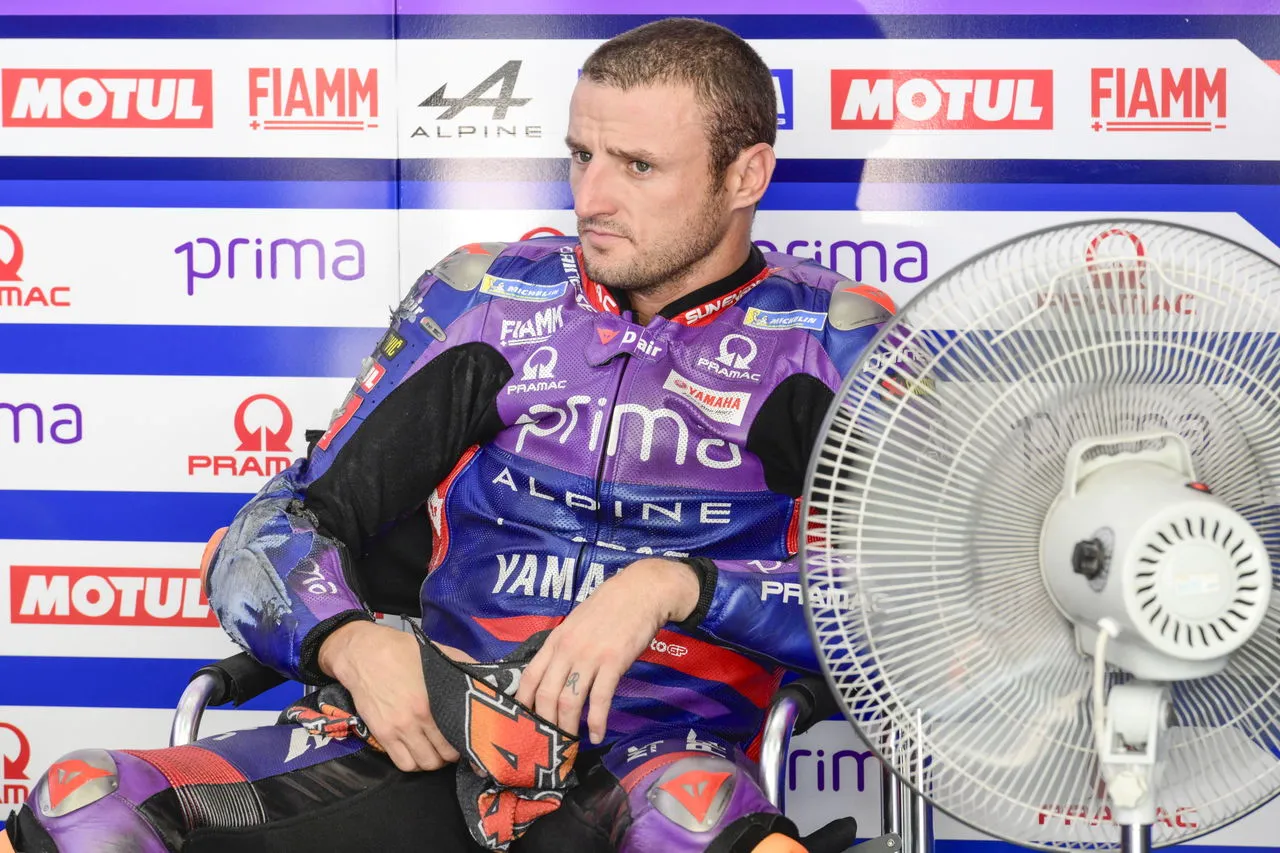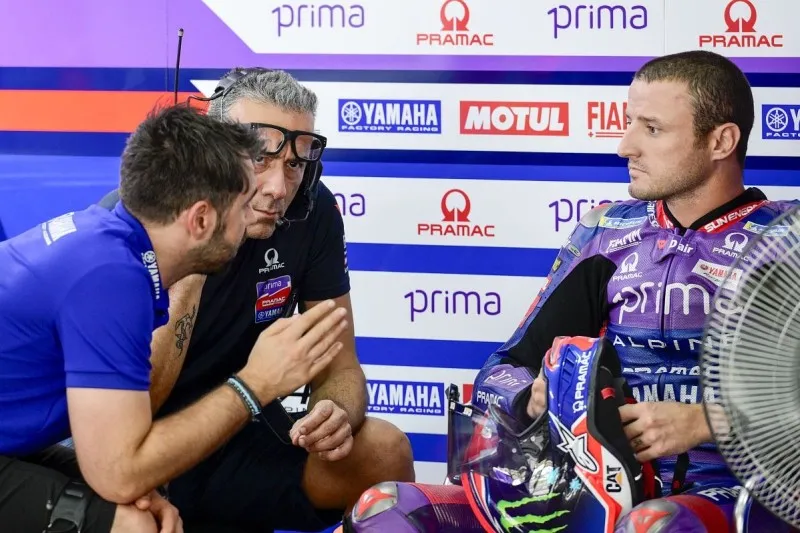

Jack Miller Claims There’s More to Come From Yamaha’s Inline Four
Jack Miller has never been one to shy away from speaking his mind, and his latest comments about Yamaha’s inline-four engine have sent waves through the MotoGP paddock. Despite Yamaha’s struggles in recent seasons, Miller insists that the Japanese manufacturer has not yet shown its full potential. With significant updates expected and a renewed sense of determination within the Yamaha camp, Miller’s claim has ignited fresh discussions about whether the struggling powerhouse can stage a comeback.
Many in the MotoGP world have written off Yamaha’s inline-four as outdated in an era where V4 engines dominate the championship battle. However, Miller’s belief that there is more performance to be unlocked challenges the prevailing narrative. His statement suggests that Yamaha may have hidden strengths that are yet to be fully utilized, and it raises an intriguing question—can Yamaha still be a title contender, or is this simply a case of misplaced optimism?
Yamaha’s Inline-Four: A Legacy Under Threat
Yamaha’s inline-four configuration has been a staple of its MotoGP success for decades. Legendary riders such as Valentino Rossi and Jorge Lorenzo proved that this engine layout could deliver championships, offering a smooth power delivery that complemented Yamaha’s renowned cornering ability.
However, the sport has evolved, and Yamaha has struggled to keep up with the V4-powered bikes that now dominate the grid. Ducati, KTM, and Aprilia have all taken massive strides forward with their aggressive and powerful V4 designs, leaving Yamaha to play catch-up. Even Honda, another inline-four stalwart, has adapted by prioritizing raw power over their traditionally balanced approach.
In recent seasons, Yamaha has faced criticism for failing to evolve at the pace of its competitors. Their once-feared M1 machine now seems underpowered in a straight line, and even their signature cornering advantage has been diminished as other manufacturers refine their aerodynamic packages and ride-height devices.
Miller’s Experience with Multiple Manufacturers

Miller is uniquely positioned to comment on the current state of Yamaha’s inline-four, given his experience riding a variety of MotoGP machinery. Having competed on Honda, Ducati, KTM, and now Yamaha, he has firsthand knowledge of the strengths and weaknesses of different engine configurations.
His time with Ducati gave him access to one of the most powerful V4s in MotoGP, known for its blistering straight-line speed and aggressive acceleration. KTM provided him with a machine that combined power with an evolving chassis philosophy, allowing for adaptability across different circuits. Now, with Yamaha, Miller faces an entirely new challenge—extracting performance from a bike that many believe has been left behind by technological advancements.
Yet, Miller remains optimistic. He has repeatedly stated that Yamaha’s inline-four still has potential and that the team is working on unlocking new performance gains. His confidence suggests that he has seen something in the Yamaha package that others have overlooked.
Where Does Yamaha Stand in the Current MotoGP Landscape?
Yamaha’s struggles have been well-documented, but the team remains committed to closing the gap. With new leadership and increased technical partnerships, the Japanese manufacturer is making a concerted effort to modernize its approach.
The biggest challenge for Yamaha has been adapting to the era of advanced aerodynamics and ride-height devices. Ducati’s sophisticated holeshot device and Aprilia’s aggressive downforce strategies have set new benchmarks, leaving Yamaha searching for ways to remain competitive.
However, Yamaha has always been known for its ability to respond when faced with adversity. Their previous championship-winning campaigns were built on a combination of methodical engineering and rider input. If Miller’s optimism is based on genuine progress behind the scenes, Yamaha may still have a fighting chance to reclaim its place at the front.
Can Yamaha Overcome Its Straight-Line Deficit?

One of the most glaring issues with Yamaha’s inline-four is its relative lack of straight-line speed compared to the V4-powered machines. While Yamaha excels in corner speed, the trade-off has been a disadvantage when it comes to acceleration and top-end power.
Miller’s belief that Yamaha has more to offer suggests that the team may have found ways to compensate for these weaknesses. There are a few possible areas where Yamaha could improve:
- Aerodynamics: A more refined aerodynamic package could help Yamaha reduce drag and improve its top speed without sacrificing stability.
- Engine Development: Yamaha may have discovered untapped potential within its inline-four architecture, possibly through updated combustion technology or better power delivery.
- Ride-Height Devices: If Yamaha can implement more effective ride-height adjustments, they could find better acceleration off the corners, mitigating their disadvantage against the V4 machines.
Miller’s comments indicate that Yamaha is actively working on these areas, and while progress may take time, it is clear that the team is not willing to accept mediocrity.
How Does Miller Fit Into Yamaha’s Long-Term Plans?
Miller’s arrival at Yamaha signals a shift in the team’s philosophy. Traditionally, Yamaha has relied on smooth, precise riders who excel in high-corner-speed riding styles. Miller, however, is known for his aggressive approach, hard braking, and ability to adapt to difficult conditions.
His input could be instrumental in shaping Yamaha’s development path. If Miller’s feedback leads to significant improvements, he could play a key role in Yamaha’s resurgence.
However, it is also possible that Miller’s optimism is a reflection of his own desire to make the most of his current opportunity. As a rider who has moved between multiple manufacturers, Miller knows that a strong showing with Yamaha could define his legacy in MotoGP. If he can prove that Yamaha’s inline-four still has untapped potential, it would be a major achievement for both himself and the team.
A Pivotal Season for Yamaha and Miller
The upcoming season will be crucial for both Yamaha and Jack Miller. If Miller’s claims are backed up by improved results on track, it will validate Yamaha’s continued commitment to its inline-four philosophy. However, if the performance gains fail to materialize, Yamaha could be forced to make difficult decisions about the future of its MotoGP project.
For Miller, this season represents a chance to prove that he can be a leader within Yamaha. His aggressive riding style and vast experience give him a unique perspective on the challenges facing the team, and his belief in the bike’s potential suggests that he is willing to fight for Yamaha’s return to the top.
Regardless of how the season unfolds, Miller’s comments have added an extra layer of intrigue to the MotoGP landscape. Yamaha’s inline-four may be under heavy scrutiny, but if there is indeed more performance to come, the competition could be in for a surprise.
The only question now is whether Yamaha can deliver on Miller’s optimism. If they do, the 2025 MotoGP season could mark the beginning of a remarkable turnaround for one of the sport’s most storied manufacturers.


















